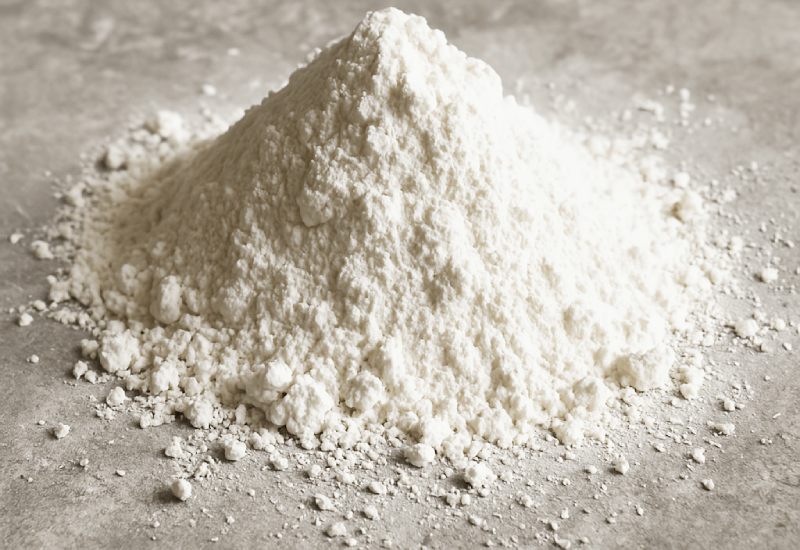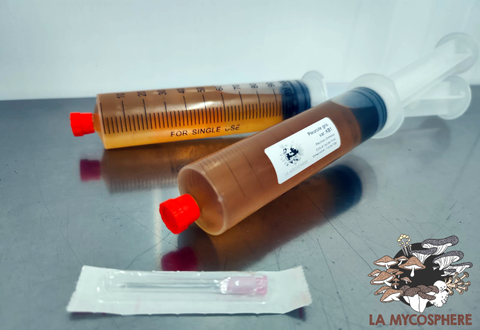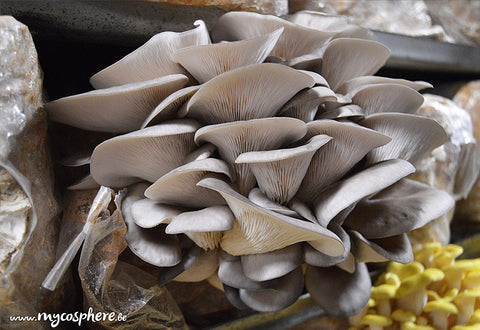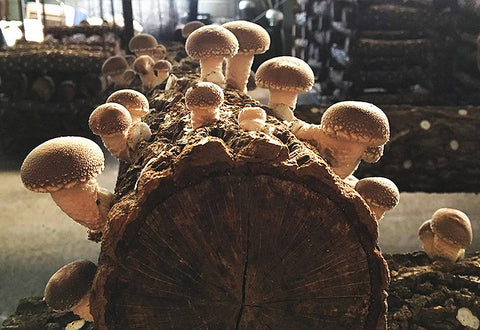Slaked Lime Limestone (Ca(OH)₂)
- 🧪 SLACK LIME (CALCIUM HYDROXIDE): A valuable mineral additive to adjust the pH of growing substrates, especially for gourmet mushrooms like oyster mushrooms.
- ⚖️ PH REGULATION: Increases and stabilizes the pH of the substrate, preventing the development of undesirable microorganisms and promoting rapid colonization of the mycelium.
- 🌿 HYGIENIC PREPARATION OF THE SUBSTRATE: Ideal for cold pasteurization techniques (cold water lime pasteurization), ensuring a healthy substrate without cooking.
- 🔧 EASY TO USE: Easily mixes with straw or other lignocellulosic materials, making substrate preparation quick and efficient.
The calcareous slaked lime, also called calcium hydroxide, is a commonly used additive in substrate preparation for cultivating certain mushrooms, especially species that tolerate or require a basic pH substrate (such as some Pleurotus or Stropharia).
Roles of slaked lime in mushroom cultivation
1. Increase of the substrate's pH
The main function of slaked lime is to increase the substrate's pH, often quickly and significantly. This allows to:
-
Create an unfavorable environment for many contaminants (bacteria, molds).
-
Favor mushrooms tolerant to alkaline pH, such as some oyster mushrooms.
-
Replace thermal treatment, in some cases, with cold chemical pasteurization (notably with straw or cotton hulls), by combining lime and water.
2. Substrate disinfection
At high doses (generally in a lime water soaking preparation), lime acts as a disinfectant agent, greatly reducing microbial load without requiring thermal sterilization or pasteurization.
3. Improvement of texture and lignocellulose degradation
Lime can facilitate the degradation of lignocellulose in certain substrates, making plant fibers more accessible to fungal enzymes.
4. Limestone supply
Practical use of slaked lime
Substrate preparation
-
Cold soaking method (cold lime pasteurization): Straw or a similar substrate is immersed in water containing 1 to 2% slaked lime (10 to 20 g/L of water) for 12 to 24 hours. Then, the substrate is drained and directly inoculated.
-
It can also be used in small amounts directly in a substrate mix, but this requires careful control of doses to avoid inhibiting fungal growth.
Dosage
-
For cold pasteurization: typically 1–2% slaked lime per liter of water.
-
In a mixed substrate: generally less than 1% of dry weight, with caution.
Usage precautions
-
Corrosive: slaked lime is caustic; it can cause skin and eye irritation. Wearing gloves and goggles is recommended.
-
pH too high: although oyster mushroom mycelium can withstand high pH levels, an excess can completely inhibit mycelium growth. It is important to respect the dosages adapted to the cultivated mushroom.
-
Not suitable for all mushrooms: some mushrooms, like shiitakes, prefer a slightly acidic pH and do not tolerate high alkalinity.
Status in organic farming
-
In Europe, slaked lime is authorized in organic farming for certain uses, notably as a substrate treatment agent or disinfectant, according to the rules of Regulation (EU) 2018/848 and its annexes.





